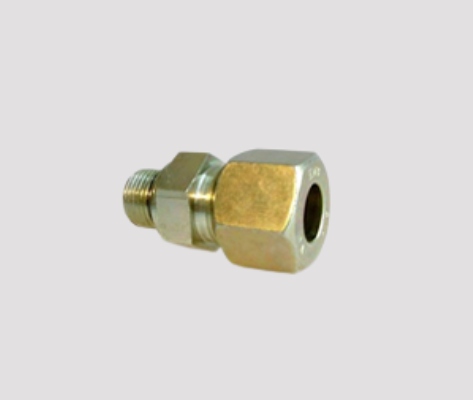
In a lubrication system, straight connectors may be used to connect various components together
to ensure that lubricants are delivered to the different parts of a machine or system where they
are needed. Straight connectors may be used to join tubing, hoses, and fittings together in a
straight line to facilitate the flow of lubricants from a reservoir to the lubrication points.
For example, in a centralized lubrication system, straight connectors may be used to connect the
pump to the tubing, and then to connect the tubing to the metering devices, which then
distribute the lubricant to the lubrication points. Straight connectors may also be used to
connect the lubricant reservoir to the pump and to the filters that help remove contaminants
from the lubricant.
Straight connectors used in lubrication systems need to be carefully selected based on their
material, size, and compatibility with the lubricant being used.
| Model | Details |
|---|---|
| ModelLTSC-4T/M6X1 Or 4T/M6X0.75 | DetailsSuitable for tube 4 mm ‘OD’ tube. |
| Model*LTSC-4T/M8X1 | DetailsTaper connector, Suitable for tube 4 mm ‘OD’ tube. |
| ModelLTSC-4T/M10X1 | DetailsSuitable for tube 4 mm ‘OD’ tube. |
| Model*LTSC-4T/1/8”BSP | DetailsTaper connector, Suitable for tube 4 mm ‘OD’ tube. |
| Model*LTSC-4T/1/4”BSP | DetailsTaper connector, Suitable for tube 4 mm ‘OD’ tube. |
| ModelLTSC-6T/M6X1 Or 6T/M6X0.75 | DetailsSuitable for tube 6 mm ‘OD’ tube. |
| Model*LTSC-6T/M8X1 | DetailsTaper connector, Suitable for tube 6 mm ‘OD’ tube. |
| ModelLTSC-6T/M10X1 | DetailsSuitable for tube 6 mm ‘OD’ tube. |
| ModelLTSC-6T/1/8”BSP | DetailsSuitable for tube 6 mm ‘OD’ tube. |
| ModelLTSC-6T/1/4”BSP | DetailsSuitable for tube 6 mm ‘OD’ tube. |
*Taper.
Elbows are commonly used in lubrication systems to change the direction of fluid flow around
corners or obstacles. They allow for a more flexible and efficient system design, as they can
help route the fluid around other components and obstacles without requiring additional piping
or tubing.
Elbows in lubrication systems can be made of different materials, such as brass, stainless
steel, or plastic, depending on the application and the type of fluid being used. They can also
come in different sizes and angles, with common angles being 45 degrees and 90 degrees.
It's important to choose the right type of elbow for a lubrication system based on factors such
as the flow rate, pressure, and temperature of the fluid being used, as well as the size and
layout of the system
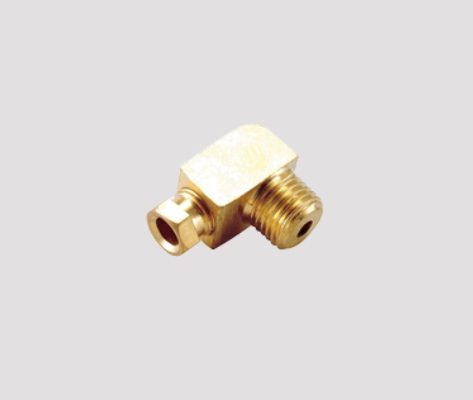
| Model | Details |
|---|---|
| Model*LTE-4T/M6X1 Or M6X0.75 | DetailsTaper Thread, Suitable for tube 4 mm ‘OD’ tube. |
| Model*LTE-4T/M8X1 | DetailsTaper Thread, Suitable for tube 4 mm ‘OD’ tube. |
| Model*LTE-4T/1/8”BSP | DetailsTaper Thread, Suitable for tube 4 mm ‘OD’ tube. |
| Model*LTE-4T/1/4”BSP | DetailsTaper Thread, Suitable for tube 4 mm ‘OD’ tube. |
| Model*LTE-6T/M6X1 Or M6X0.75 | DetailsTaper Thread, Suitable for tube 6 mm ‘OD’ tube. |
| Model*LTE-6T/M8X1 | DetailsTaper Thread, Suitable for tube 6 mm ‘OD’ tube. |
| Model*LTE-6T/M10X1 | DetailsTaper Thread, Suitable for tube 6 mm ‘OD’ tube. |
| Model*LTE-6T/1/8”BSP | DetailsTaper Thread, Suitable for tube 6 mm ‘OD’ tube. |
| Model*LTE-6T/1/4”BSP | DetailsTaper Thread, Suitable for tube 6 mm ‘OD’ tube. |
*Taper
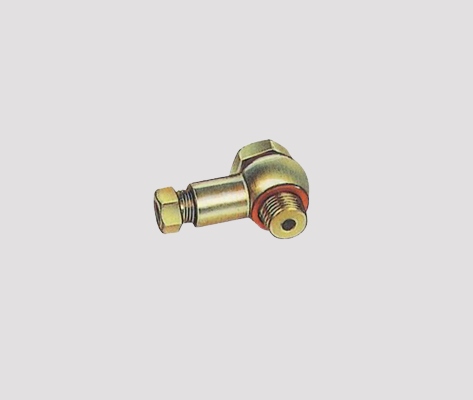
A banjo fitting is a type of fluid fitting commonly used in lubrication systems. It consists of
a hollow bolt with a spherical union at the end, which is attached to a flexible hose or tubing.
The other end of the fitting is threaded and can be attached to a lubrication point or other
component in the system.
Banjo fittings are commonly used in lubrication systems where space is limited, as they allow
for more flexibility in routing the fluid flow. They can also help reduce the number of fittings
and connections required in the system, which can improve overall reliability and reduce the
risk of leaks.
In a banjo lubrication system, the banjo fitting is typically connected to a metering valve or a
grease fitting, which dispenses the lubricant to the desired lubrication point.
| Model | Details |
|---|---|
| ModelLTB-4T/M6X1 Or M6X0.75 | DetailsSuitable for tube 4 mm ‘OD’ tube. |
| ModelLTB-4T/M8X1 | DetailsSuitable for tube 4 mm ‘OD’ tube. |
| ModelLTB-4T/1/8”BSP | DetailsSuitable for tube 4 mm ‘OD’ tube. |
| ModelLTB-4T/1/4”BSP | DetailsSuitable for tube 4 mm ‘OD’ tube. |
| ModelLTB-6T/M8X1 | DetailsSuitable for tube 4 mm ‘OD’ tube. |
| ModelLTB-6T/M10X1 | DetailsSuitable for tube 4 mm ‘OD’ tube. |
| ModelLTB-T/1/8”BSP | DetailsSuitable for tube 4 mm ‘OD’ tube. |
| ModelLTB-6T/1/4”BSP | DetailsSuitable for tube 4 mm ‘OD’ tube. |
Connector blocks are commonly used in lubrication systems to provide a way to connect multiple
tubing or piping lines at a single point. They are designed to allow for easy installation and
removal of tubing or piping lines without disrupting the entire system.
Connector blocks can come in different shapes and sizes, depending on the specific application
and the number of lines that need to be connected. They can be made from various materials such
as brass, stainless steel, or plastic, depending on the type of fluid being used and the
environmental conditions of the application.
In a lubrication system, connector blocks are typically installed at a central location to allow
for easy distribution of lubricants to different lubrication points.
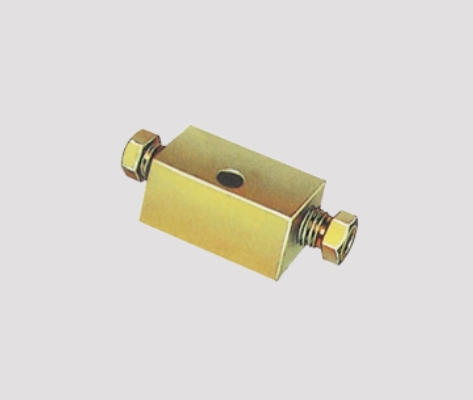
| Model | Details |
|---|---|
| ModelLTCB-4T | DetailsSuitable for tube 4 mm ‘OD’ tube. |
| ModelLTCB-6T | DetailsSuitable for tube 6 mm ‘OD’ tube. |
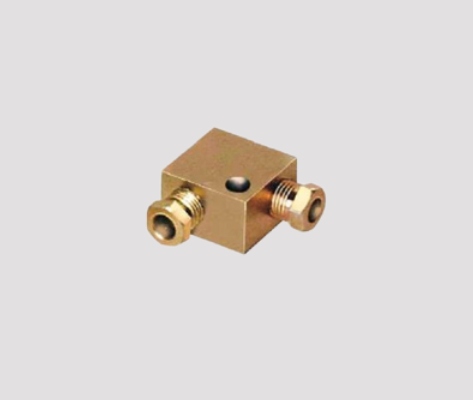
Elbow blocks in lubrication systems refer to the occurrence of blockages or obstructions in the
elbow or bend of a lubrication system's piping. These blockages can cause disruptions in the
flow of lubricating oil or other fluids through the system, leading to reduced lubrication and
increased wear and tear on the system's moving parts.
There are several potential causes of elbow blocks in lubrication systems. One common cause is
the accumulation of sediment or other debris in the elbow, which can occur if the lubricant is
not filtered properly or if there are leaks in the system that allow contaminants to enter.
Another possible cause of elbow blocks is the presence of air pockets or bubbles in the
lubricant, which can create turbulence and eddies in the flow of the fluid and lead to blockages
in the elbows or bends.
| Model | Details |
|---|---|
| ModelLTEB-4T | DetailsSuitable for tube 4 mm ‘OD’ tube. |
| ModelLTCB-6T | DetailsSuitable for tube 6 mm ‘OD’ tube. |
A tee block in lubrication systems refers to a type of pipe fitting that is shaped like the
letter "T" and is used to join three pipes or hoses together at a right angle. In lubrication
systems, tee blocks can be used to split the flow of lubricating oil or other fluids in
different directions, allowing multiple components or systems to be lubricated
simultaneously.
Tee blocks can be made from a variety of materials, including brass, steel, and plastic, and may
be threaded or welded to the pipes or hoses they connect. They can also be equipped with various
types of valves, such as ball valves or needle valves, to control the flow of fluid through the
system.
Proper installation and maintenance of tee blocks in lubrication systems is important to ensure
that the system functions properly and efficiently.
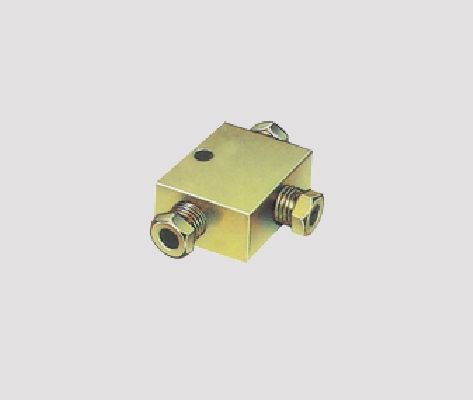
| Model | Details |
|---|---|
| ModelLTT-4T | DetailsSuitable for tube 4 mm ‘OD’ tube. |
| ModelLTT-6T | DetailsSuitable for tube 6 mm ‘OD’ tube. |
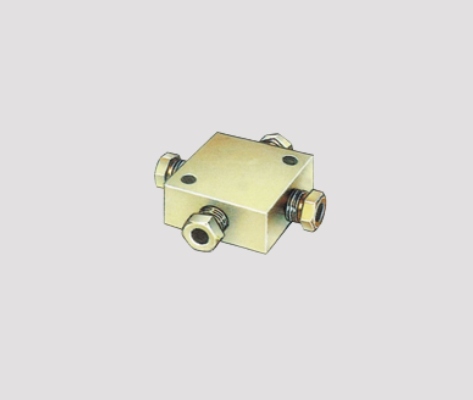
A cross block in lubrication systems is a type of pipe fitting that is shaped like the letter
"X" and is used to join four pipes or hoses together at right angles. Cross blocks are used in
lubrication systems to distribute lubricating oil or other fluids to multiple components or
systems simultaneously.
Cross blocks can be made from a variety of materials, including brass, steel, and plastic, and
may be threaded or welded to the pipes or hoses they connect. They can also be equipped with
various types of valves, such as ball valves or needle valves, to control the flow of fluid
through the system.
Proper installation and maintenance of cross blocks in lubrication systems is important to
ensure that the system functions properly and efficiently.
| Model | Details |
|---|---|
| ModelLTCR-4T | DetailsSuitable for tube 4 mm ‘OD’ tube. |
| ModelLTCR-6T | DetailsSuitable for tube 6 mm ‘OD’ tube. |
Plugs in a lubrication system are small devices that are used to prevent the flow of oil or
lubricant from certain passages in the lubrication system. They are also known as oil gallery
plugs or oil restrictor plugs.
These plugs are typically made of metal, such as steel or brass, and are designed to fit into
specific holes or passages in the engine block, cylinder head, or other components of the
lubrication system. They are typically installed during engine assembly and are critical for
ensuring proper oil pressure and flow to the engine's moving parts.
Plugs in a lubrication system can be used for a variety of purposes, such as regulating oil flow
to certain components, preventing oil leaks, or helping to balance oil pressure throughout the
engine.

| Model | Details |
|---|---|
| ModelLTP-8 | DetailsThread Size – M 8X1. tube. |
| ModelLTP-10 | Details Thread Size – M 10X1. tube. |
| ModelLTP -1/4” BSP | DetailsThread Size – ¼” BSP”. tube. |
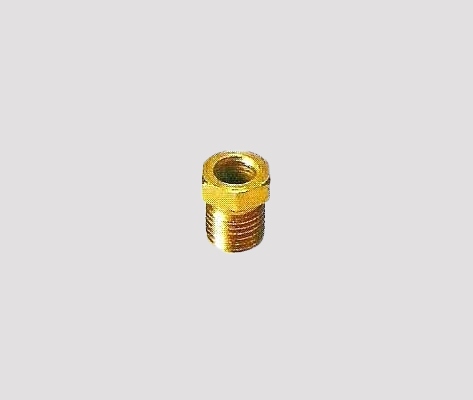
A locking screw in a lubrication system is a type of fastener that is used to secure a component
or fitting in place, preventing it from coming loose due to vibration or other forces. The
locking screw can be found in various parts of the lubrication system, such as in oil pumps, oil
filter housings, and oil coolers.
To ensure that the locking screw functions properly and does not come loose, it is important to
apply the appropriate lubrication. A special type of lubricant called threadlocker is commonly
used on locking screws. Threadlocker is a type of adhesive that is designed to fill the gaps
between the threads of the screw and the component it is fastening, creating a strong bond that
prevents the screw from loosening.
Threadlocker comes in different strengths and is color-coded to indicate the strength level.
| Model | Details |
|---|---|
| ModelLTLS – 4T | DetailsThread Size – M 8X1. Suitable for tube 4 mm ‘OD’ tube. |
| ModelLTLS -6T | DetailsThread Size – M 10X1. Suitable for tube 6 mm ‘OD’ tube. |
In lubrication systems, a locking cone or ferrule is not a standard component. However, there
are various types of fittings and connectors used in lubrication systems to ensure secure
connections and prevent leakage. These fittings and connectors often incorporate different
mechanisms for locking and sealing.
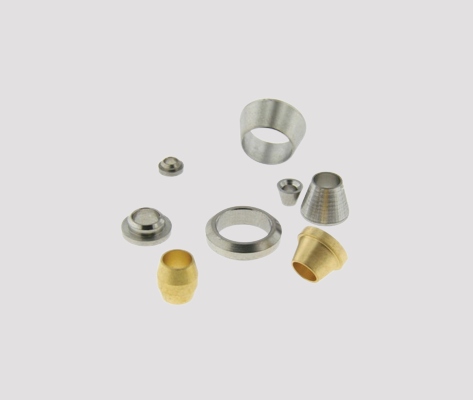
| Model | Details |
|---|---|
| ModelLTLC – 4T | DetailsSuitable for tube 4 mm ‘OD’ tube.. |
| ModelLTLC -6T | DetailsSuitable for tube 6 mm ‘OD’ tube. |
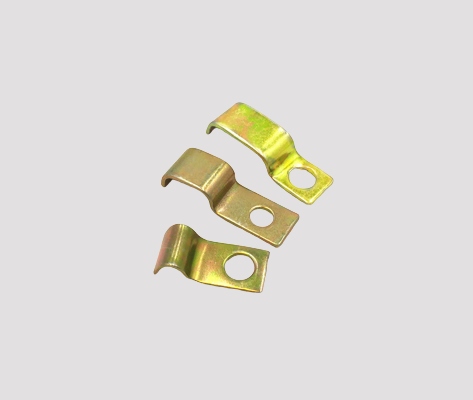
In lubrication systems, clamps are commonly used to secure and support tubing, hoses, or pipes
in place. They help prevent movement, vibration, and potential damage to the system. Clamps come
in various designs and materials, each suitable for different applications and requirements.
Here are a few types of clamps used in lubrication systems:
| Model | Details |
|---|---|
| ModelLTC – 4 - 1 | DetailsSuitable for tube 4 mm ‘OD’ 1 tube. |
| ModelLTC – 4 - 2 | DetailsSuitable for tube 4 mm ‘OD’ 2 tubes. |
| ModelLTC – 4 - 3 | DetailsSuitable for tube 4 mm ‘OD’ 3 tubes. |
| ModelLTC – 6 - 1 | DetailsSuitable for tube 6 mm ‘OD’ 1 tube. |
| ModelLTC – 6 - 2 | DetailsSuitable for tube 6 mm ‘OD’ 2 tubes. |
| ModelLTC – 10 - 1 | DetailsSuitable for tube 10 mm ‘OD’ 1 tube. |
| ModelLTC – 16 - 1 | DetailsSuitable for tube 16 mm ‘OD’ 1 tube. |
Copper-coated steel tubes are commonly used in lubrication systems due to their advantageous
properties. These tubes are typically made of steel as the base material with a thin layer of
copper coating on the outside. The copper coating provides several benefits in lubrication
systems, including enhanced corrosion resistance, improved heat transfer, and reduced
friction.
In lubrication systems, copper-coated steel tubes offer the following advantages:
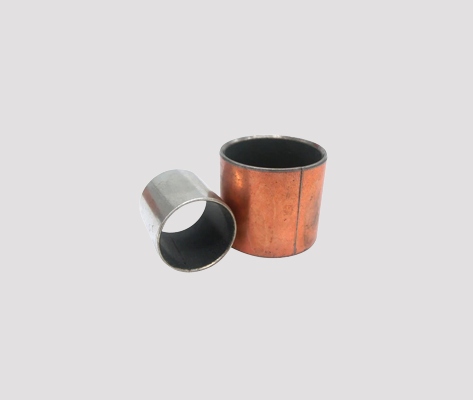
| Model | Details |
|---|---|
| ModelLTST – 4T | DetailsOD – 4 mm, Wall thickness – 0.70 mm. |
| ModelLTST -6T | DetailsOD – 6 mm, Wall thickness – 0.70 mm. |
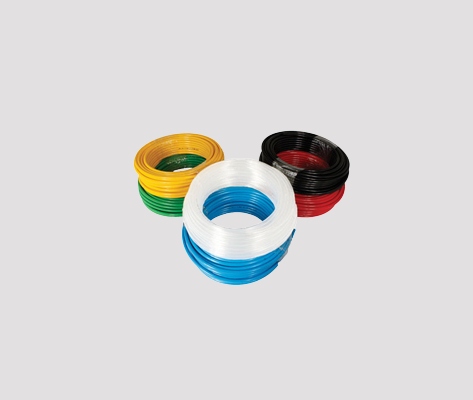
Nylon tubes are commonly used in lubrication systems due to their beneficial properties. These
tubes, made from nylon polymer, offer several advantages when utilized in lubrication
systems.
Here are some key points regarding the use of nylon tubes in lubrication
systems:
| Model | Details |
|---|---|
| ModelLTNT – 4T | DetailsOD – 4 mm, Wall thickness – 1 mm. |
| ModelLTNT -6T | DetailsOD – 6 mm, Wall thickness – 1 mm. |
Flexible rubber hoses are commonly used in lubrication systems due to their advantageous
properties. These hoses, made from synthetic rubber compounds, offer several benefits when used
in lubrication systems.
Here are some key points regarding the use of flexible rubber hoses in lubrication systems:
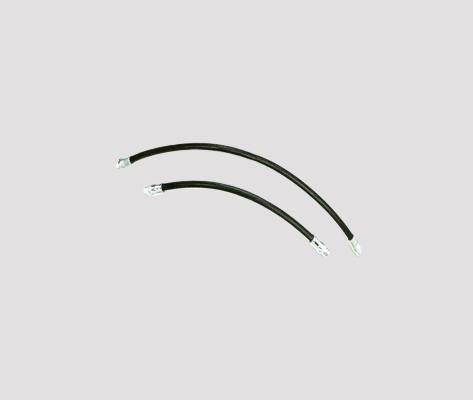
| Model | Details |
|---|---|
| ModelHLD 1 | DetailsDosage 0.01cc, 0.03 cc, 0.05 cc, 0.10 cc, 0.16 cc per stroke. |
| ModelHLD 2 | DetailsDosage 0.25 cc, 0.40 cc per stroke. |
| ModelHLD 3 | DetailsDosage 1.0 cc, 1.60 cc, Per stroke |